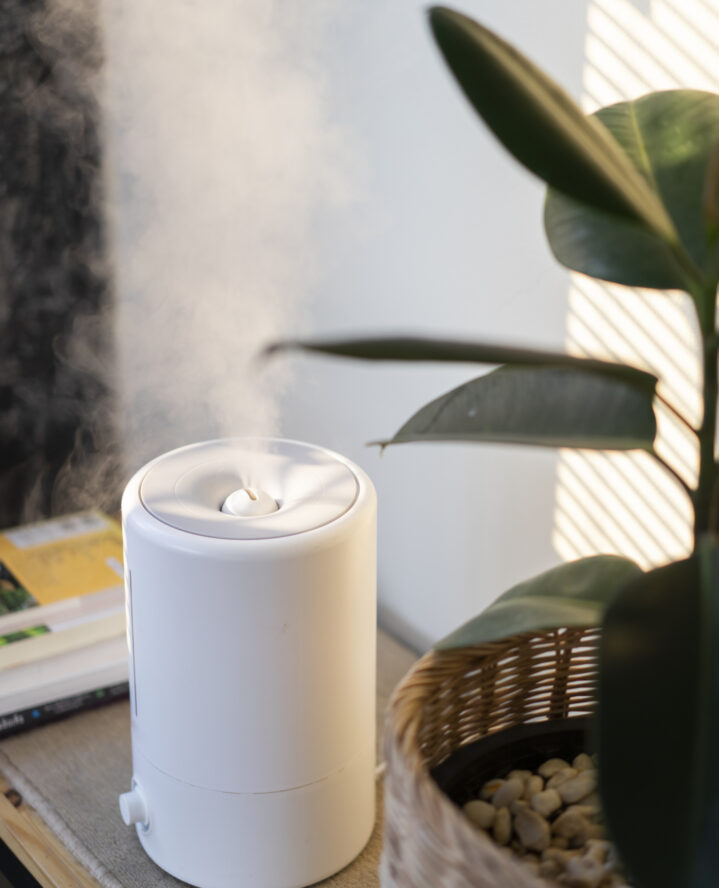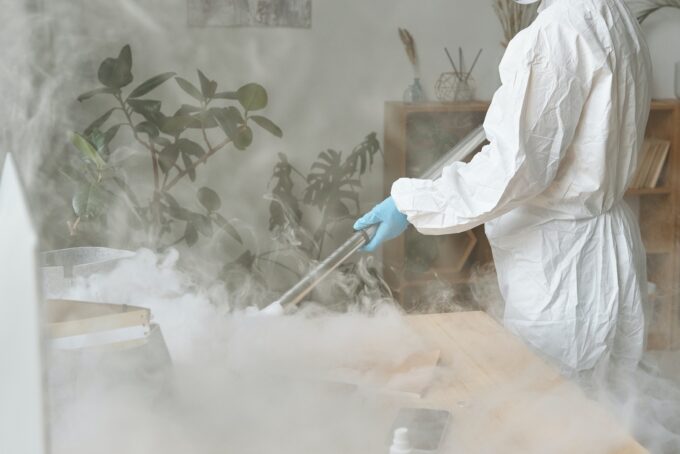Indoor humidity plays a significant role in both the condition of your home and your quality of life. Understanding its impact is important for maintaining a comfortable and healthy living environment.
The Impact of Indoor Humidity on the Home
Your home can be negatively impacted by too much indoor humidity. This can lead to the growth of mold, mildew, and dust mites, which can damage your furniture, personal belongings, and the materials in your home. These organisms can flourish in moist environments, leading to structural problems, unpleasant smells, and allergic reactions.
Accumulated moisture may cause wallpaper to peel off, wood to warp and damage to paint. Furthermore, windows may develop condensation, resulting in water stains and possible harm to frames and sills.
The Impact of Indoor Humidity on Your Quality of Life
Indoor humidity does not just affect your home, it affects your quality of life, too. When humidity is high, your living spaces can feel uncomfortable and stuffy. It can also cause fatigue and lethargy when it is hard to cool down in hot weather.
Individuals who have respiratory conditions such as asthma or allergies may experience discomfort and difficulty while breathing due to an increase in moisture in the air. Excessive moisture can worsen symptoms like wheezing, coughing, and congestion.
In addition, sleeping in high humidity can negatively impact the quality of your sleep. Excessive moisture can cause discomfort and disrupt your rest, leaving you feeling tired during the day. It can also provide a breeding ground for dust mites, which are known to worsen allergies and respiratory problems, further interfering with your sleep.
The Effects of Low Humidity Inside the Home
Conversely, having low indoor humidity levels can also create difficulties. Dry environments may result in dry skin, chapped lips, and irritated nasal passages for individuals. Additionally, low humidity can generate static electricity, which can result in unpleasant shocks and harm electronic devices.
To ensure a comfortable and healthy living space, keep the indoor humidity at an optimal level, which is usually between 40% and 60%. By monitoring and adjusting the humidity levels regularly, you can create a comfortable living environment while protecting your home and well-being. Here are five ways to manage indoor humidity:
Use a Dehumidifier
Using a dehumidifier can help you better manage indoor humidity levels. Dehumidifiers are designed to effectively remove excess moisture from the air, creating a more comfortable living environment. For best results, place the dehumidifier in areas with high humidity, such as basements, bathrooms, or laundry rooms where moisture tends to accumulate.
To keep the indoor environment healthy and prevent issues like mold growth, musty odors, and damage to furniture due to excessive moisture, simply set the desired humidity level on the dehumidifier and use it regularly.
Ensure Proper Ventilation
To effectively manage indoor humidity, it is important to have proper ventilation. This can be done by installing and using exhaust fans in areas like bathrooms and kitchens, which are more likely to have moisture. In addition, opening windows and doors when weather conditions permit can help with natural air circulation, letting fresh air in and removing stale, humid air.
Improving airflow and reducing humidity levels indoors can be achieved through cross-ventilation. This can be done by opening windows strategically or using fans. By implementing these ventilation practices, you can create a healthier indoor environment with better air quality and less moisture buildup.
Invest in Air Conditioning
In addition to providing cool air, air conditioning units also help reduce the humidity in a room. To optimize this effect, you should set the AC to a comfortable temperature and use the “auto” or “dry” mode. These settings work to actively remove moisture from the air, which helps to maintain the ideal humidity levels.
Using your air conditioner helps create a more comfortable living environment by reducing that sticky and uncomfortable humid feeling. Because humidity can lead to the growth of mold and mildew, which thrive in damp conditions, take advantage of your AC’s dehumidifying capabilities to enjoy a cooler, drier, and more pleasant indoor atmosphere.
Fix Leaks and Insulate
Regularly checking your home for water leaks and promptly addressing them can help to reduce high indoor humidity levels caused by moisture intrusion through leaks and cracks. Leaks in pipes, faucets, roofs or windows should be fixed to prevent excess moisture from entering your living spaces.
Proper insulation is important in reducing moisture buildup and condensation. To create a barrier against outside humidity, make sure your doors, windows, and walls are well-insulated. These measures can help minimize moisture infiltration, maintain lower humidity levels, and create a healthier and more comfortable indoor environment.
Consider Proper Venting for Appliances
To prevent indoor humidity from appliances such as clothes dryers, stoves, and dishwashers that generate heat and moisture, make sure to vent them correctly to the outside. This will allow the humid air to expel outside and stop it from accumulating indoors.
To maintain good performance and avoid excess moisture, make sure to clean and upkeep your appliances. Specifically, remove lint from the dryer vents, clean the stove hoods and filters, and check for leaks or blockages in the dishwasher hoses. These actions will help reduce the amount of moisture released by your appliances, which results in a more comfortable indoor humidity level for your home.
popular posts
- 1It’s Black Business Month, So Let’s Go Shopping and #BuyBlack!
- 2These Home Decor Items Will Instantly Make Your Space Look Outdated
- 3Black-Owned Home Decor Stores To Support Across the United States
- 4A Look Inside Elon Musk's Tiny $50,000 House
- 57 Black and Multicultural Designers To Follow For Design Inspo
Home

These 5 Kitchen Tools Will Up Your Culinary Experience
by Arielle Clay | January 19, 2023

I’ll Drink To That! Host a Black-Owned Wine & Spirit Tasting At Home
by Arielle Clay | January 20, 2023
Spaces
Whether it’s luxury or ease, every area of your home should be as fabulous and unique as you.
Hunker Down: 5 Emergency Goods To Stock Up on in Times of Crisis
by Brittni Williams | June 12, 2023
How To Create a Safer Home Environment Without an Alarm System
by Brittni Williams | June 13, 2023
FOLLOW ALONG ON INSTAGRAM
#homeandtexture
Find us on social for more home inspiration where culture, personal style, and sophisticated shopping intersect to help you create a home where you love to live.






